How to dye your own hair: a step-by-step guide with colorist Josh Wood
Color guru Wood explains how to dye your own hair at home for a salon finish
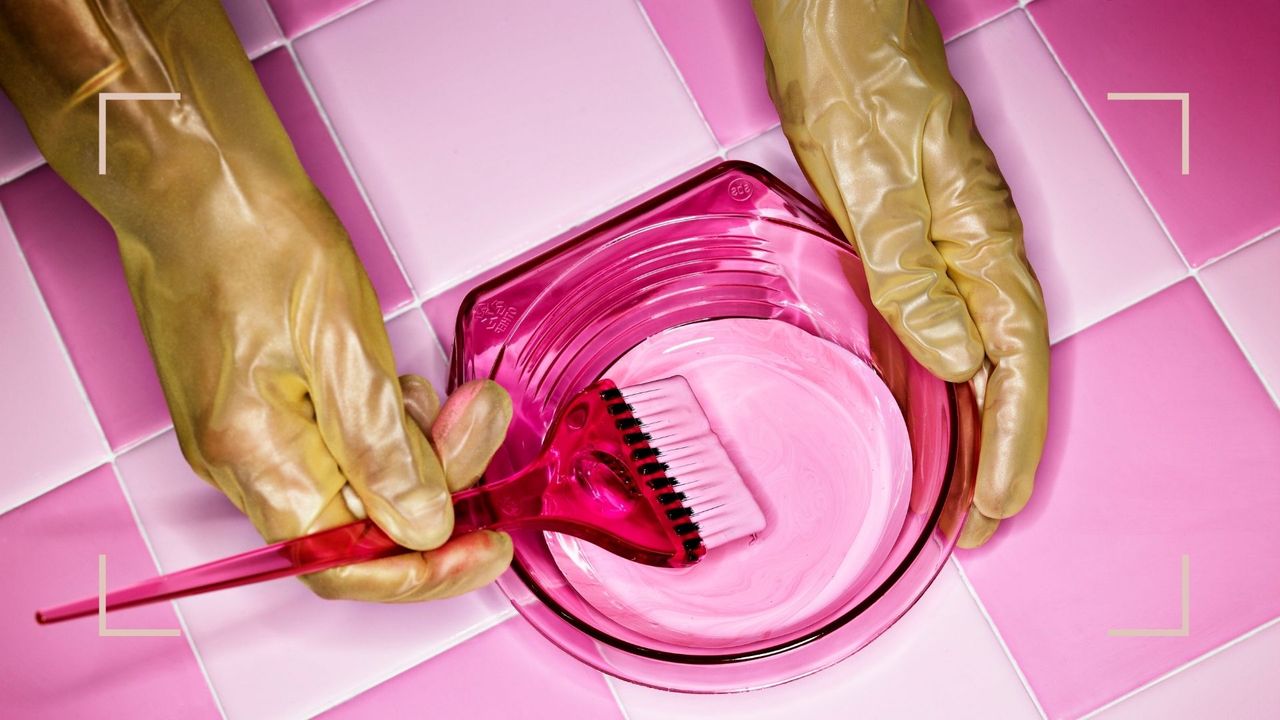

Some say picking a shade is the trickiest part of learning how to dye your own hair (warm or cool tones—help!) But it's the prep and application that really make the difference between salon-quality coloring and a less-than-perfect DIY job.
From patch tests to trying not to stain your T-shirt, towels, and bathroom tiles in the process, a lot goes into the at-home hair dye process. That's why so many of us choose to visit a salon for complicated techniques like highlights in hair and stick with easier color jobs like temporary toning for blonde hair using the best purple shampoos at home.
Let's face it, much as we'd probably all love to pop in for a balayage hair appointment every six weeks, life doesn't always work that way. Professional color can be prohibitively expensive, perhaps you aren't able to get to the salon as often as you'd like, or maybe you simply prefer to DIY. Either way, we've consulted famed color guru Josh Wood to bring you this step-by-step guide to creating salon-quality hair color at home.
How to dye your own hair, by colorist Josh Wood
Wood suggests a simple five-step approach to dyeing your own hair at home. You will need:
- Wide-toothed comb to detangle hair
- Dye brush
- Plastic clips to section hair
- Old T-shirt or towel to catch any spills
- Vaseline or barrier cream
- Box dye of choice
- Mixing bowl, plastic or rubber gloves if not included in box dye
Step 1: Patch test and prep
Regardless of your hair type, color and cut—be it short, long, a wavy hairstyle , or a bob hairstyle—the crucial rule when learning how to dye your own hair is to ensure it isn't going to cause a reaction. As formulas can change and allergies can develop without warning, it's important to do this every single time, even if you have used the brand before.
Need more help with color choice? Your skin tone and the seasons can give a good jumping-off point, or read our expert guide for anyone considering what color should I dye my hair. Once you've got your ideal color locked in, it's time to prep your station and get to work. "Make sure you do a patch test and ideally a strand test. Then you’re ready to begin," advises Wood.
Wear an old shirt or put a towel around your shoulders in case of any spills, and use the disposable gloves included in the box before handling any dyes, chemicals, or developers. You can also prevent skin staining by applying a thin layer of Vaseline or barrier cream around your hairline, temples, and nape of the neck.
Sign up for the woman&home newsletter
Sign up to our free daily email for the latest royal and entertainment news, interesting opinion, expert advice on styling and beauty trends, and no-nonsense guides to the health and wellness questions you want answered.
Step 2: Section the hair
"You should use a wide-toothed comb to brush out your hair beforehand; smooth hair means you won’t get clumps of color or missed patches. Then, split your hair into a ‘hot cross bun’ style, i.e. four sections," advises Wood.
"When you begin to learn how to dye your own hair, you should endeavor to keep your sections neat so that it’s easy to keep track of which parts have been colored and which haven’t. To section the hair as you go along, you can use the comb, or even just the tip of the color bottle." You can also use hair clamps or plastic alligator clips to help keep the rest of your hair in place while working section by section.
Step 3: Dot on your dye
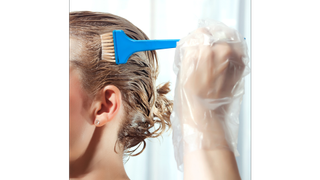
Probably the most crucial element of how to dye your own hair, and the one people struggle with the most, is the application technique. "I personally recommend using the ‘dotting method’ when applying color. Practically, this means squeezing the bottle and dotting the color on in a line along your section parting, and then rubbing the dots into your roots for maximum coverage," explains Wood.
"Technique really is everything. The trick here is to take your time and really make sure you’ve caught every last hair. Stubborn greys tend to appear around your hairline, so it’s worth paying particular attention to this area when you apply your color."
Step 4: Tackle the back
"Coloring the back of your head is, undeniably, the hardest part of home hair coloring, especially when you’re alone. Your ideal situation is, obviously, to have someone else look over your work and let you know if you’ve missed any parts," says Wood. Try to rope on in a friend or family member, especially if you are attempting a complex coloring technique such as home highlighting kits.
"However, you can create equal results yourself by taking some time and using a hand mirror. Naturally, you will rely on ‘feel’ more when it gets to the back of your head, but if you use the double mirror method (a handheld mirror reflecting the back of your head into a larger mirror), you will be able to see clearly if you’ve missed a spot."
Step 5: Gently remove stains
"There are a couple of ways to avoid color staining the skin. If you are at home, Vaseline works well. You can also purchase barrier cream from pharmacies. The best way to stop staining is to not leave the color sitting on the skin for too long," Wood suggests.
"Wet a cotton round and carefully wipe around the hairline, being careful not to scrub the color off the hair. If you have left the color on and it has stained, lather shampoo on cotton wool and rub quite vigorously. Alternatively, use one of the best toners for skin as this works well too."
Now the hard part's over, all you need to do is sit back while your color develops, and rinse it out as per the instructions on the box. Simple!
Our beauty editor recommends...
ORI Lifestyle Green Sandalwood Comb | RRP: $14.50/£12
Handcrafted in beautiful sandalwood, this smoothly detangles all hair types to prep for color (it's particularly great on curly and natural hairstyles.)
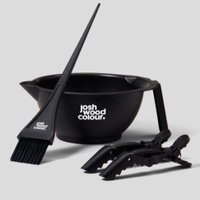
Josh Wood Colour Colour Accessories Kit | RRP: £15 (UK only)
This contains everything you need to master how to dye your own hair, including sectioning clips, a mixing bowl, and a dye brush. All feel sturdy enough to be used many times, and help keep your bathroom mess-free.
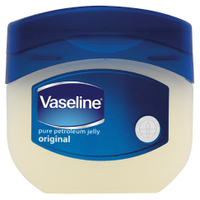
Vaseline Original Petroleum Jelly | RRP: $3.99/£2.99
Good old Vaseline and it's 101 uses, one of which is preventing any pigment from staining your skin while you get to grips with how to dye your own hair. A bathroom must-have.
woman&home thanks Josh Wood for his time and expertise
Jess Beech is an experienced fashion and beauty editor, with more than eight years experience in the publishing industry. She has written for woman&home, GoodtoKnow, Now, Woman, Woman’s Weekly, Woman’s Own and Chat, and is a former Deputy Fashion & Beauty Editor at Future PLC. A beauty obsessive, Jess has tried everything from cryotherapy to chemical peels (minus the Samantha in Sex and The City-worthy redness) and interviewed experts including Jo Malone and Trinny Woodall.
-
 Nicole Kidman just made this lesser known skirt style our top pick for spring
Nicole Kidman just made this lesser known skirt style our top pick for springHer simple black midi skirt and white shirt combination got a much-needed updated with the unique silhouette
By Charlie Elizabeth Culverhouse Published
-
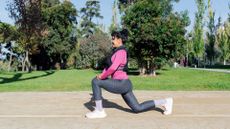 I've done walking lunges in my workouts every week for 5 years - here's why they are my staple
I've done walking lunges in my workouts every week for 5 years - here's why they are my stapleWalking lunges are a compound movement that can help boost strength, balance, and stability. Here are all the benefits and how to do them right
By Grace Walsh Published

